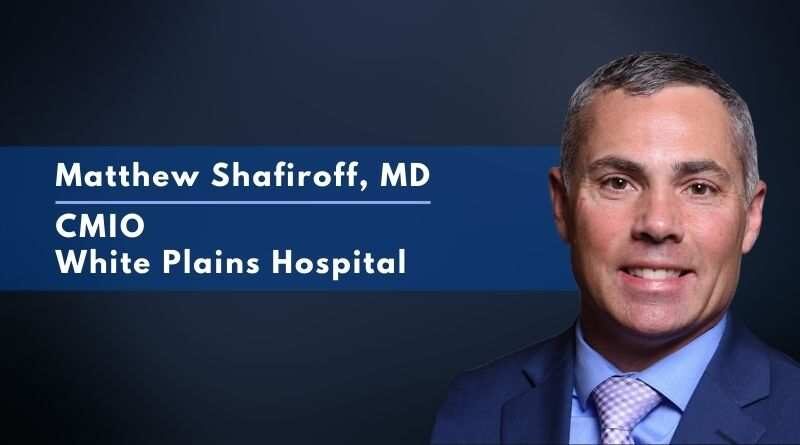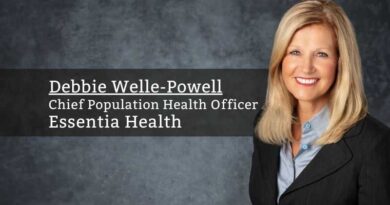How COVID-19 Accelerated Healthcare Innovation
By Matthew Shafiroff, MD CMIO, Clinical Informaticist, and Emergency Medicine Physician, White Plains Hospital
A popular saying among emergency medical providers during the height of the COVID-19 was, “where have all the strokes and heart attacks gone?” The answer, of course, was: nowhere. Shelter-in-place orders not only created physical barriers that limited patient access to their providers, but many patients let fear take control and chose to ignore symptoms, both life-threatening and routine. They thought that staying home was better than risking exposure to the virus in a doctor’s office, only to find that these choices led to more risks, complications, or a longer recovery.
Thankfully, telehealth has been an immense force in helping to reverse this trend and reassuring patients. Through virtual medicine, patients can feel safe and get the urgent and routine care they need, both in a crisis and going forward.
While telehealth was not new pre-COVID, adoption was relatively slow. According to a McKinsey survey in April 2020, “Consumer adoption [of telehealth] skyrocketed, from 11 percent of US consumers using telehealth in 2019 to 46 percent of consumers now using telehealth to replace canceled healthcare visits.”
White Plains Hospital had been working on a telehealth solution prior to the pandemic, but it wasn’t until the crisis struck and procedural barriers were lifted that our platform could fully go live. As the pandemic quickly spread within our community, it became clear that in order to provide care to our patients, the Hospital’s ambulatory network of approximately 250 clinicians would need to deliver care virtually for the foreseeable future. In less than ten days, all 250 of these clinicians were trained and delivering virtual consultations and follow-up appointments on our new telehealth platform, “WPH Connect.” As a result, between March and July, more than 25,000 virtual visits had been completed.
Although a crisis thrust technology into the forefront, it also lets us see how technology could support care in other areas of the Hospital. Faced with critical shortages of Personal Protective Equipment (PPE), we began using our platform at the Emergency Department for rapid triage of patients with COVID-related symptoms. This created a safe and effective modality to triage patients while reducing the rapid turnover of PPE between each patient interaction. Between March and July 2020, more than 1,200 telehealth visits were performed from our screening tent outside of the Emergency Department, allowing for safer and more efficient diagnosis and contributing significantly to the preservation of PPE.
Our telehealth platform was also important for patient follow-up, playing a large role in preventing disease spread, and reducing readmissions. For the nearly 1,500 patients who were evaluated and released from the Emergency Department with COVID-related symptoms, we were able to monitor their symptoms and track their progress from home.
As we begin to shift our focus beyond the virus cautiously, there’s an open road ahead to explore technology use to enhance care. To that end, we’ve begun using WPH Connect to deliver virtual physical therapy, virtual breastfeeding support for new moms, virtual discharge readiness, and also to add loved ones to patient visits, like including a family member in an oncologist appointment. We were also able to use the app to create an added layer of service for a hearing-impaired patient. An ASL interpreter was added to the visit and the patient could also use the chat option to type messages.
Innovations are also extending beyond virtual visits. We’re working now to embed geofencing into WPH Connect so that the check-in process can begin once a patient pulls into the parking lot at one of our offices. This will limit unnecessary interaction between the patient and staff, allowing the patient to head directly to an examination room once ready. We are also leveraging software tools in our Emergency Department to immediately alert and assign a clinician to a patient that is in route to our Emergency Department, helping our physicians prepare for the patient’s arrival.
Additionally, the Hospital has recently gone live with a “telestroke” program where clinicians use specially designed carts to remotely consult with fellow providers via the video conferencing screen and conduct examinations using several connected scopes and peripherals. In the future, these carts can also be used for other inter-professional consultations including infectious disease, pulmonary, dermatology, and pediatrics, to name a few.
In less than ten days, all 250 of these clinicians were trained and delivering virtual consultations and follow-up appointments on our new telehealth platform, “WPH Connect.
We are beginning to see first-hand how innovation can augment traditional models of care. However, one of the biggest takeaways is that when harnessed appropriately, virtual health can still feel personal and “hands-on.” During this crisis, clinicians at White Plains Hospital were able to get a glimpse into patients’ lives during telehealth visits and could be there for their patients while many were stuck in their homes wondering how their cancer care or chronic diseases will be managed.
While technology can never replace human interaction, it can enhance patient experience and patient and provider interaction. This pandemic has changed the way we think about a lot of things, including safety and healthcare delivery. While we hope the virus will be manageable soon, the technology innovations and lessons learned are here to stay.



